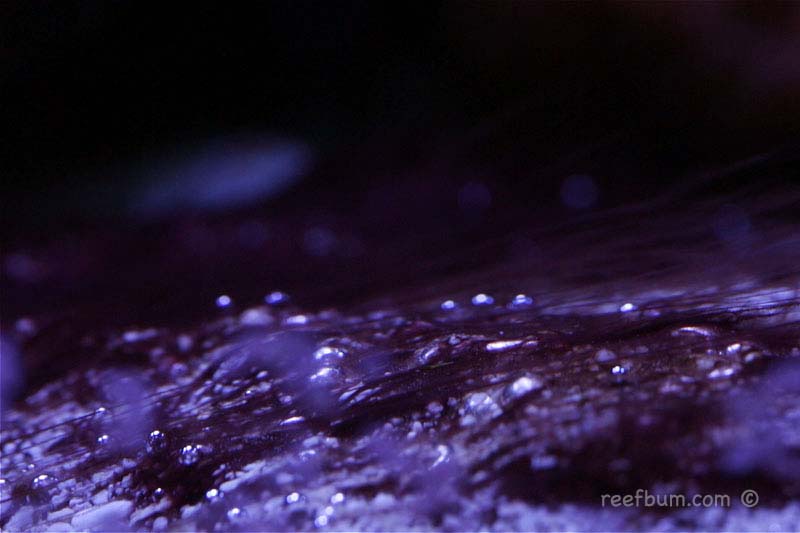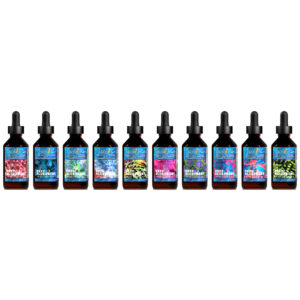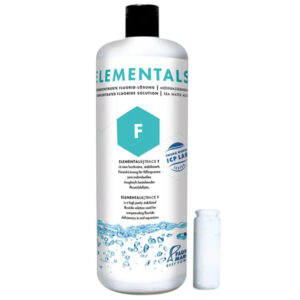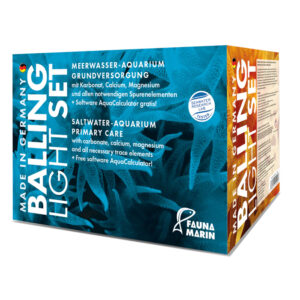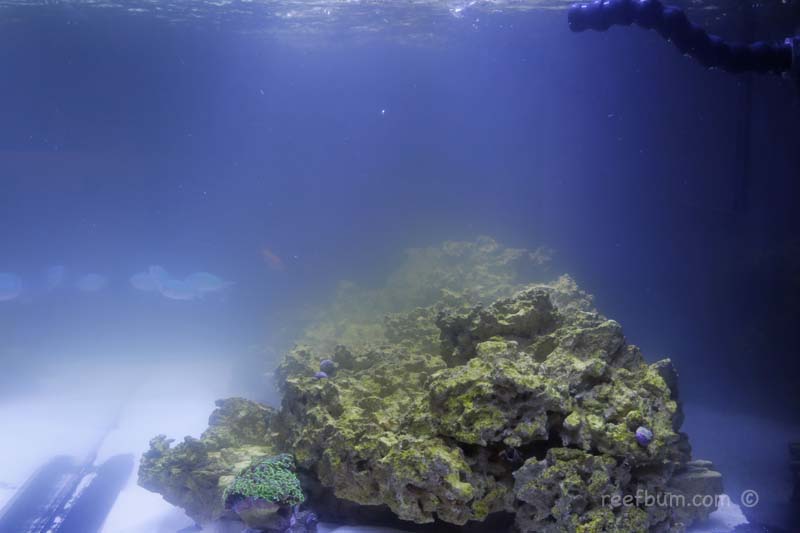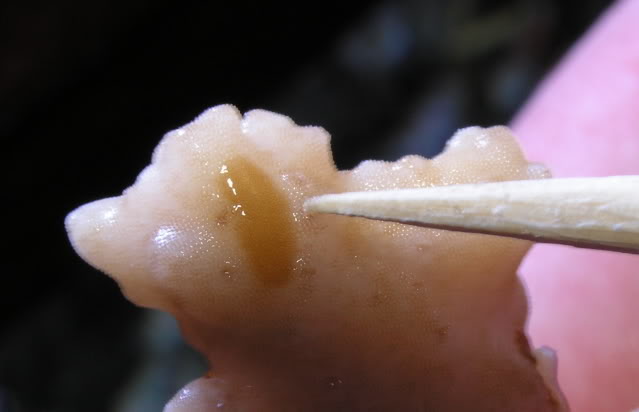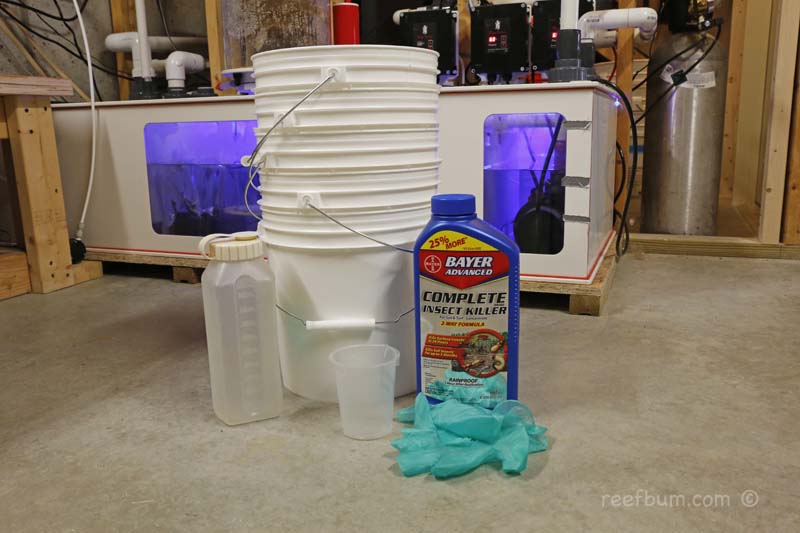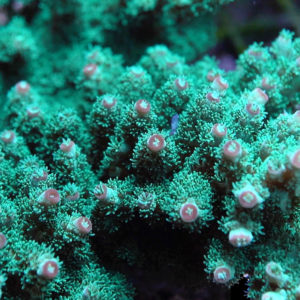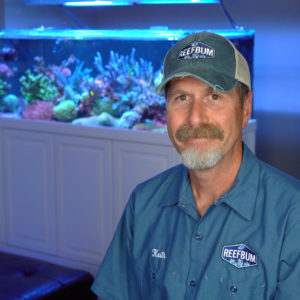Cyano is a common pest that can rear its ugly head when excess nutrients are present. It is often referred to as a form of algae but it is actually a bacteria (cyano is short for cyanobacteria). In most instances, the best remedy is to increase flow, siphon out what you can and abide by the rules of nutrient control by performing regular water changes, using a good skimmer, not overfeeding the tank, employing a good clean up crew and removing any detritus that might collect in the tank or sump.
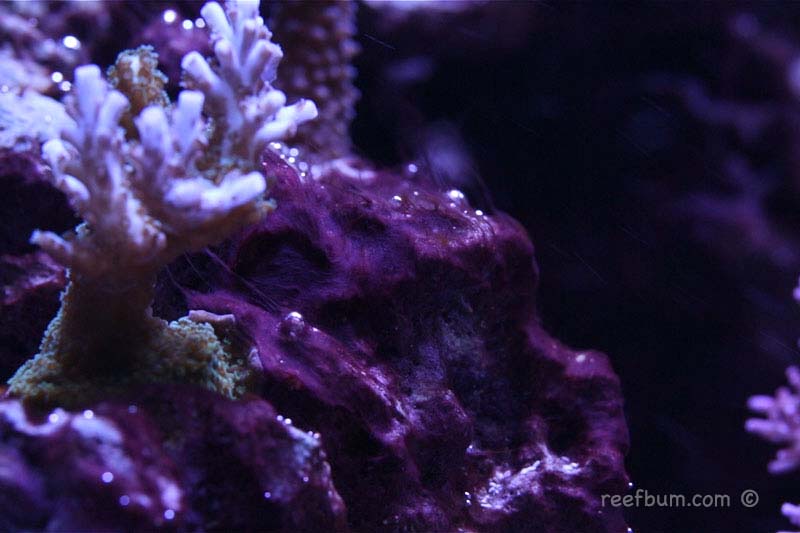
Cyano do rely on light since they are photosynthetic so in extreme cases the tank lights can be turned off for three days to knock back a bloom. If this option is chosen, one should siphon out as much cyano as possible before the blackout and do a large water change right before the lights go back on. The lack of light can stress out corals, especially SPS, so one does have to be careful. Keep in mind the cyano will return if the source of the problem is not identified and corrected.
Use Caution When Treating Cyano with Chemicals
Chemical treatments are another option but they come with risks since it’s possible they can kill beneficial bacteria and potentially cause a tank to crash. I ended up using Chemiclean on my 187 gallon tank due to a particularly nasty outbreak of Spirulina cyano that would not go away despite my best efforts to eliminate it via siphoning and aggressive nutrient control.
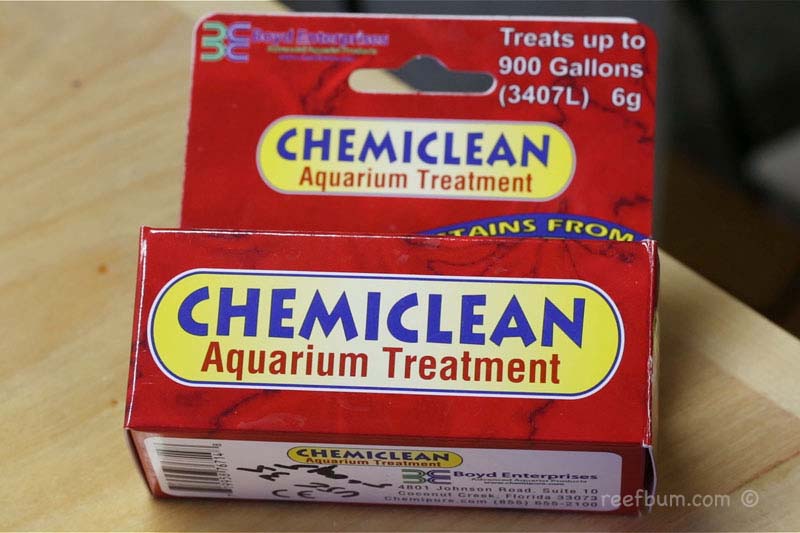
Here are the steps I took when using Chemiclean.
- Right before treatment, I took the cup off of my skimmer and let all the air bubbles overflow into my sump. I also added an air stone in my sump. Oxygen levels MUST be increased when using this product.
- Removed activated carbon. Use of UV and ozone should also be discontinued.
- Did treatment for 48 hours.
- Performed 20% water change after treatment.
- Brought skimmer and activated carbon back online.
This process worked for me as it did rid my tank of cyano without harming my corals. If you follow these steps and still see some cyano then repeat the procedure 24 hours after the first treatment. Finally, I do need to include this disclaimer: I am not responsible for any harm to your reef if you follow these steps…..so do this at your own risk. Another option to consider is dosing nitrates to combat nitrates. Yes, this goes against the grain of conventional thinking. You can learn more about this here.
Additional Resources
If you would like some help with a new tank build, including help designing a custom aquarium, or help re-configuring your current setup then you can visit this page for more information. And if you are looking to add some equipment, I do sell GHL, Pax Bellum, Reef Octopus Calcium and Kalk Reactors and Royal Exclusiv products, including Dreamboxes, which is the equipment I use and recommend. I also sell Reef Brite metal halide and LED fixtures as well as Maxspect & IceCap Gyres.
As for additional insights and information, please explore my many other reef tank and SPS related articles as well as my YouTube channel. For an even deeper dive into reef tank care you can check out my Reef Keeping Master Class. This online course is an immersive and one of a kind educational tool designed to help reef aquarium hobbyists build and maintain a beautiful SPS reef tank. The course is a series of video presentations with some supplemental video from my YouTube channel. There are also quizzes to help students retain and understand the information presented in the course.
Need some frags…..I can help with that as well 🙂 Please visit my SPS Frag store to see what is available.

